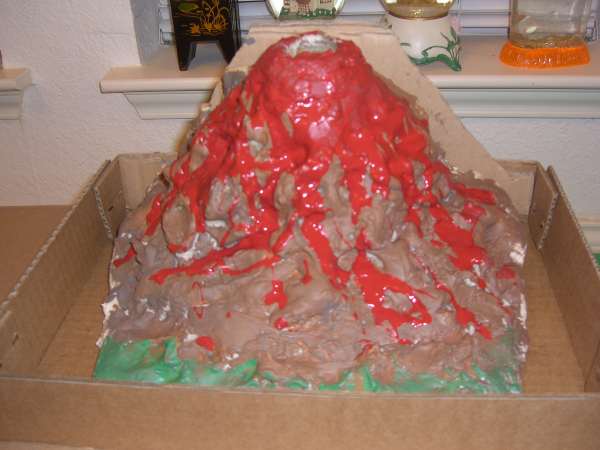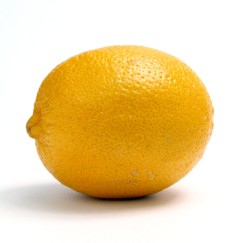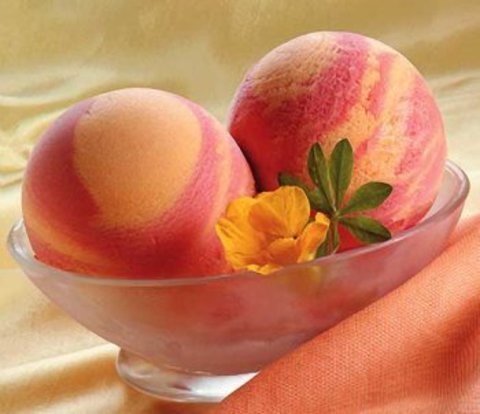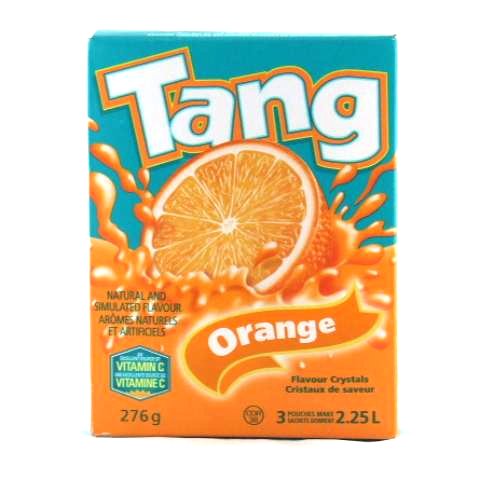- Syllabus Chemistry
- Curriculum Specification Form 4 Chemistry
- Curriculum Specification Form 5 Chemistry
- Concept Acids and Bases
- Strength of Acids and Alkalis
- Concentration of Acids and Alkalis
- Neutralisation
Make Your Own Volcano
![]()

- A volcano - Talk to an art teacher about making a volcano out of paper mache or plaster. You can also use clay or if you're in a hurry to make your volcano, use a mound of dirt outside.
- A container that 35mm film comes in or similar size container.
- Red and yellow food coloring (optional)
- Vinegar
- Liquid dish washing soap

- Go outside or prepare for some clean-up inside
- Put the container into the volcano at the top
- Add two spoonfuls of baking soda
- Add about a spoonful of dish soap
- Add about 5 drops each of the red and yellow food coloring
Now for the eruption!:
- Add about an ounce of the vinegar into the container and watch what your volcano come alive.


A VOLCANO is produced over thousands of years as heat a pressure build up. That aspect of a volcano is very difficult to recreate in a home experiment. However this volcano will give you an idea of what it might look like when a volcano erupts flowing lava. This is a classic experiment in which a CHEMICAL reaction can create the appearance of a PHYSICAL volcano eruption. You should look at pictures of volcanoes to be familiar with the different types. (A SHIELD volcano, for example is the most common kind of volcano, and yet few people know about them) The reaction will bubble up and flow down the side like a real volcano (only much faster!) Look for videos of volcanoes erupting and be sure that you understand how heat and pressure work to really make volcanoes erupt.
Lava In Cup
![]()


* 1/4 cup vegetable oil
* 1 teaspoon salt
* Water
* Food coloring (optional)

- Fill the glass about 3/4 full of water .
- Add about 5 drops of food coloring
- Slowly pour the vegetable oil into the glass. See how the oil floats on top - cool huh? It gets better.
- Now the fun part: Sprinkle the salt on top of the oil.
- Watch blobs of lava move up and down in your glass!
- If you liked that, add another teaspoon of salt to keep the effect going.

So what's going on? Of course, it's not real lava but it does look a bit like a lava lamp your parents may have had. First of all, the oil floats on top of the water because it is lighter than the water. Since the salt is heavier than oil, it sinks down into the water and takes some oil with it, but then the salt dissolves and back up goes the oil! Pretty cool huh?
Make Lemonade Fizzy Drink

- Lemon
- Drinking glass
- Water
- 1 teaspoon of baking soda
- Some sugar to make it sweet
- Squeeze as much of the juice from the lemon as you can into the glass.
- Pour in an equal amount of water as lemon juice.
- Stir in the teaspoon of baking soda.
- Give the mixture a taste and add in some sugar if you think it needs to be sweeter.
Exercise 3
Activity 8: Sherbet Making Activity
- You may be familiar with sherbet, it’s a tasty treat for kids and also great for talking about acids and bases. Why? Let’s find out!
- Sherbet is great because it contains both an acid and a base which react when they are together. The key is that they don’t react until they reach your tongue. Why? Because this chemical reaction needs moisture to get it started. So where does this moisture come from? It comes from your mouth! That’s right, there’s a chemical reaction going on in your mouth when you eat sherbet.
- Find a bowl and make sure it’s clean and dry.
- 1/2 teaspoon of citric acid crystals
- 1 teaspoon of icing sugar
- 1/2 teaspoon of drink crystals (Tang, a fruit-flavored drink)
- 1/4 teaspoon of bicarbonate of soda (baking soda)
Chemical Education In Malaysia
In Malaysia, Chemical Education has been in the main stream of the national education system since the days of independence. Chemistry was first taught at the secondary level; but was extended to the primary level as part of "Man and his environment" when the New Primary School Curriculum (KBSR) was introduced in 1982. Chemical education is continued in the Integrated Secondary School Curriculum (KBSM) in the combined science curriculum for forms one to three, and as part of general science and additional science or chemistry for forms four and five. For the science students who continue to study into the sixth forms, chemistry is taught as a subject both in the Higher School Certificate (STPM) and the "A" levels.
Chemistry is taught in all local universities and colleges with a science faculty/department. It is a pre-requisite for students taking undergraduate programmes in a majority of science, engineering, medicine, pharmacology, food science and nutrition, materials science, environment and, other technical and professional programmes and courses. Post graduate programmes in various disciplines in Chemistry is also being conducted in all universities with a science programme. This paper discusses chemical education in Malaysia, both at the school and university levels. It also reports on the Chemist Act 1975 and its relation to the Institiut Kimia Malaysia. Finally it relates chemistry to the industrialisation and the changing ways of life in Malaysia.
Activity 7: Puzzle of Acids and Bases
Let's try to answer the puzzle.
| Across | Down | ||||||||||||||||||||||||||||||||||||||||||||||||||||||||||||||||||||||||||||||||||||||||||||||||||||||||||||||||||||||||||||||||||||||||||||||||||||||||||||||||||||||||||||||||||||||||||||||||||||||||||||||||||||||||||||||||||||||||||||||||||||
|---|---|---|---|---|---|---|---|---|---|---|---|---|---|---|---|---|---|---|---|---|---|---|---|---|---|---|---|---|---|---|---|---|---|---|---|---|---|---|---|---|---|---|---|---|---|---|---|---|---|---|---|---|---|---|---|---|---|---|---|---|---|---|---|---|---|---|---|---|---|---|---|---|---|---|---|---|---|---|---|---|---|---|---|---|---|---|---|---|---|---|---|---|---|---|---|---|---|---|---|---|---|---|---|---|---|---|---|---|---|---|---|---|---|---|---|---|---|---|---|---|---|---|---|---|---|---|---|---|---|---|---|---|---|---|---|---|---|---|---|---|---|---|---|---|---|---|---|---|---|---|---|---|---|---|---|---|---|---|---|---|---|---|---|---|---|---|---|---|---|---|---|---|---|---|---|---|---|---|---|---|---|---|---|---|---|---|---|---|---|---|---|---|---|---|---|---|---|---|---|---|---|---|---|---|---|---|---|---|---|---|---|---|---|---|---|---|---|---|---|---|---|---|---|---|---|---|---|---|---|---|---|---|---|---|---|---|---|---|---|---|---|---|---|---|---|
|
| ||||||||||||||||||||||||||||||||||||||||||||||||||||||||||||||||||||||||||||||||||||||||||||||||||||||||||||||||||||||||||||||||||||||||||||||||||||||||||||||||||||||||||||||||||||||||||||||||||||||||||||||||||||||||||||||||||||||||||||||||||||
Activity 6: Let's Learn From Games

Acids, Bases, pH Factor for KidsFree Games & Activities Make acids and bases in the virtual kitchen
Play pH Factor games
Activity 5: Quiz of Acids and Bases
Activity 5
 | "A quiz about acids and bases. Let's see how much you can remember of those school chemistry lessons." |
15 Points Per Correct Answer - No time limit
| |
http://www.funtrivia.com/playquiz/quiz2568731d68e40.html
Profile
 |
| Top from Left: Teacher Mawar & Teacher Aadila Below from left: Teacher Tzyy Ling & Teacher Shaw Jee |
We are a group of chemistry teachers. We believe a chemistryteacher could inspire students to explore chemistry by challenging them to create an effective, eco-friendly cleaning solution. Besides, chemistry teachers could teach students the sciencetific method, including how to make observations, collect and record data, and draw conclusions. Last, we always believe that we could help students understand how chemistry impacts their lives.
Activity 4: Kitchen Chemistry
This game is first finding clues about acids and bases, experimenting with acids and bases, and then answering a question based on the results. Students, take your time to explore the game!!!!

Activity 3: Sing a Acids and Bases Song
Activity 2: pH scales of Acids and Bases
http://www.harcourtschool.com/activity/acids/
Neutralization
Neutralization
Concentrations of Acids and Alkalis
Concentrations of Acids
and Alkalis
Activity 1: GEMS Alien Juice Bar
Strength of Acid and Alkalis
Strength of
Acid and Alkalis
Concept Acids and Bases
Acids
Enjoy yourself with the following video.

.JPG)





.jpg)






